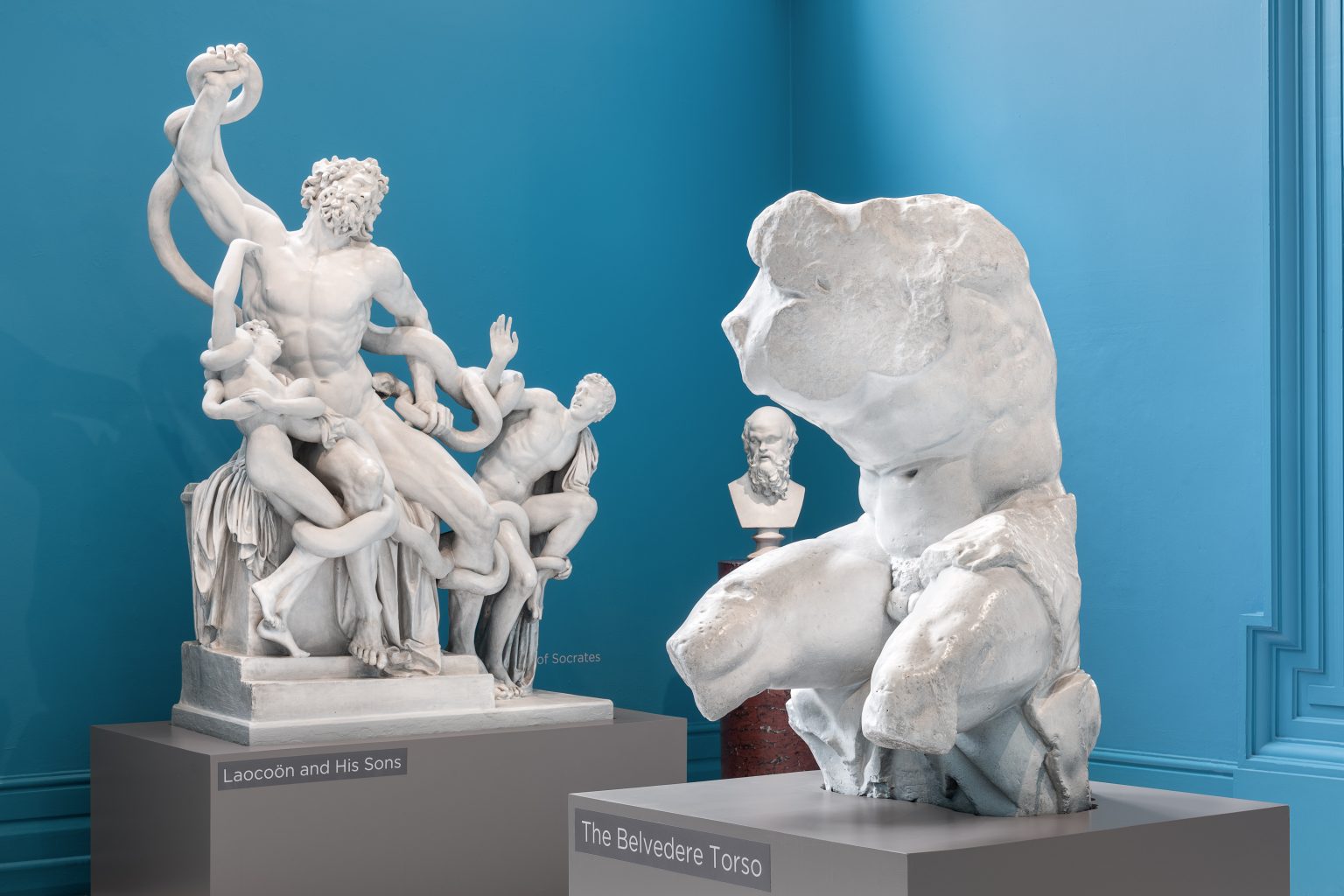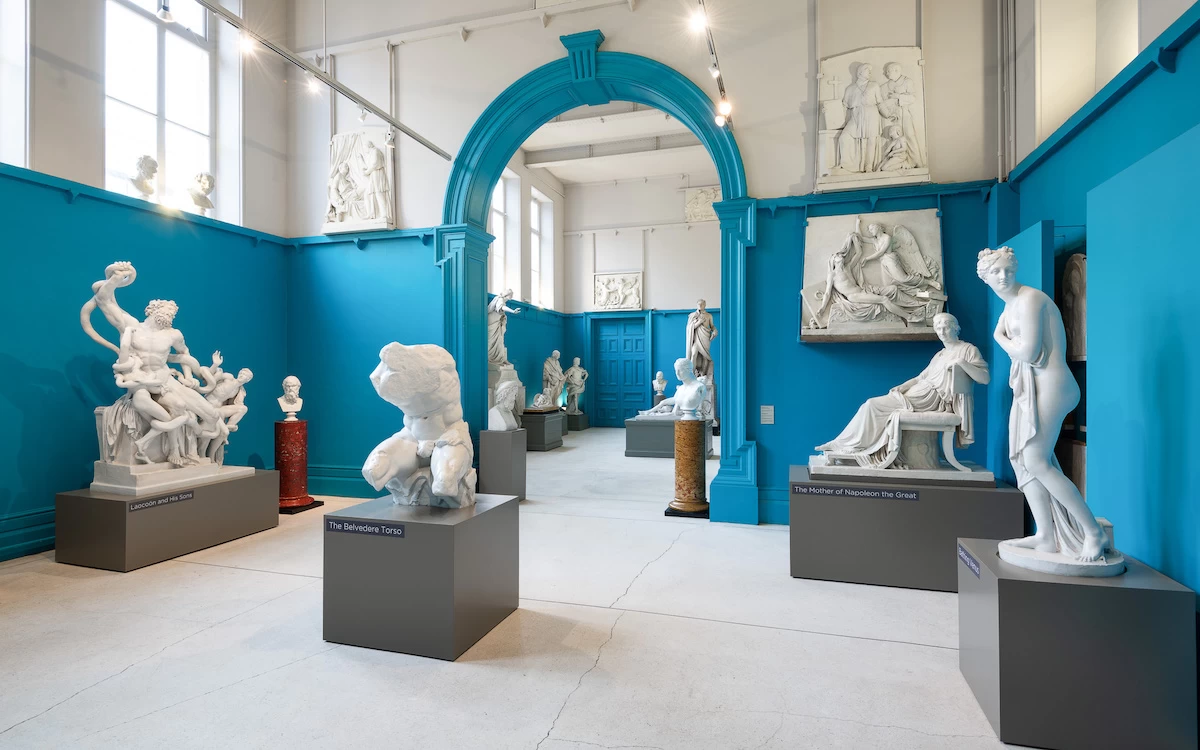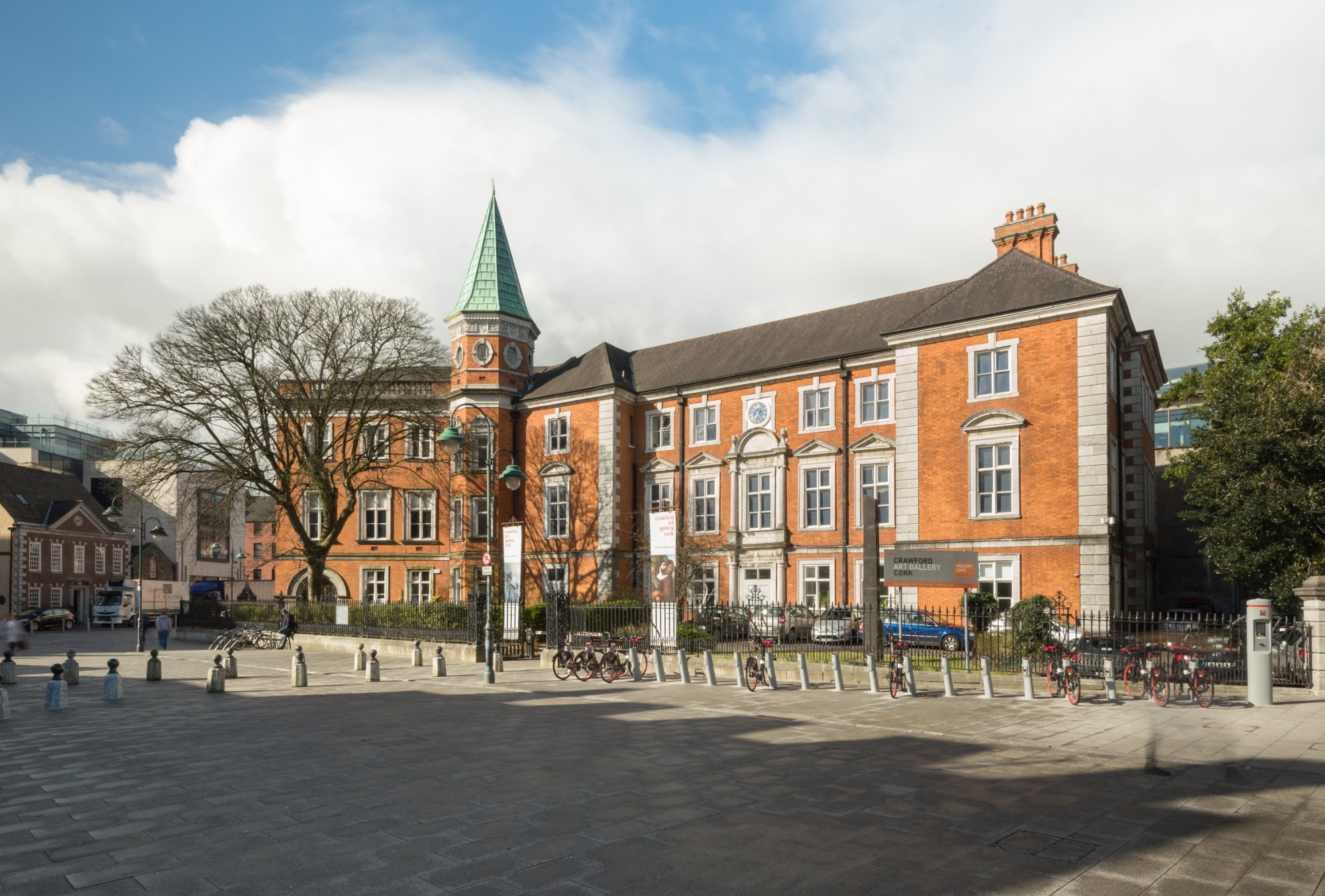By Katerina Taxiaropoulou,
“Take two steps back and look right. Compare her curves to the figure at the end: a male athlete extended in archery (…) all energy and calm center. Streamlined, stretched like his missing bowstring. Sound of stretching elastic and a ping. Look back at Venus, all soft and simpering. Sound of muscle” (muscle: a question of power). These are the words Professor Anna Furse chose to open her audio guide through the historic collection of Canova Casts, exhibited at Crawford Art Gallery in Cork, Ireland.
Established as a cultural institution in the early 19th century, Crawford Art Gallery has dedicated its rooms to visual arts, hosting unique painting, photography, and sculpture pieces. Regarding sculpture, especially, an early acquisition that today forms the basis of the gallery’s collection is the Canova Casts. These are faithful reproductions of renowned Ancient Greek and Roman sculptures, initially created by Antonio Canova for the Vatican Museums and then commissioned by Pope Pius VII as a gift for King George IV in thanks for Britain’s help at the Battle of Waterloo. In October 1818, these casts were transferred from London to Cork and have thus “transformed how art has been appreciated, studied, and practiced in the south of Ireland” (Recasting Canova).
Instead of simply standing there as mere replicas of the original god sculptures seen at the Vatican Museums, the Canova Casts have functioned as an endless source of inspiration for local academics and artists who continuously study them from different angles and create new exhibitions. One such exhibition is Muscle: a Question of Power created by Anna Furse.
With a headset, the visitors walk from sculpture to sculpture while listening to Furse’s directions as to the way they should approach it. As the opening lines of the audio guide show, they are invited to step close to each sculpture and observe every muscle of the body. At the same time, Furse gives them information about the god, the scene presented and the physical dynamics observed.
An exhibit that instantly captures the spectator’s attention is Laocoon and His Sons, a group of statues that depict the Trojan priest Apollo and his sons suffering from a serpent attack, sent from Poseidon as a punishment.

Another equally striking sculpture is Belvedere Torso which was created by Apollonius, the son of Nestor, an Athenian. According to the Vatican Museum historians, “the most favored hypothesis identifies it with Ajax, the son of Telamon, in the act of contemplating his suicide” (Musei Vaticani).
As the Belvedere Torso finds itself in the room’s center, one can walk easily around it without being distracted by any other sculpture placed next to it. Anna Furse directs the spectator’s eyes toward the strained muscles of the hero’s bending legs and his swollen ribs. Because the head is missing, the agony within the body makes an even stronger impression.
Apart from masculine figures, there is also the presence of the feminine. Goddess Venus is the first sculpture Furse comments on, and she keeps coming back to it after examining the bodies of gods. She compares their strained, hard, struggling muscles to her relaxed ones. The only female in a long line of male sculptures, Venus stands out for her laxness. They represent conflict. She represents peace. They represent sport. She represents sexuality.
Of course, in an exhibition she has named Muscle: a question of Power, Anna Furse uses Venus to talk about muscle as a source of power for the female agent. As she states, in antiquity women do not have muscular bodies, because they are not supposed to be strong.

So, for the tour’s closure, she chooses a video that features talks by women athletes. A runner, a ballet dancer, a pole dancer, and a fitness trainer come together to share their story with exercise and how their muscles give them a sense of strength, not only physical but also cognitive and emotional. Women do not have to be ethereal and fragile. They can be rough. In a way, muscle gives them back the power they have been deprived of throughout history.
After one leaves the Canova Casts room, they can take the Crawford Art Gallery experience one step further by visiting the exhibition Bodywork which takes place in the next room. This exhibition features pieces of modern art, mainly painting and photography. In a way, this exhibition completes the previous one. Muscle: A Question of strength explores the bodies of ancient Greek gods, and how their muscles tell the story of who they are. Bodywork presents the speaking bodies of modern, everyday people. It presents the bodies of mortals.
After being elevated from the earth by observing the perfectly sculptured bodies and clear-cut emotional states of gods, in Bodywork the spectators reach the ground again. This exhibition portrays everything human, in other words, everything but perfection. People’s bodies are ill and their minds are confused. Distortion prevails as an effect in many artworks. Also, there is a parallel reference to urban life, and technology and how these two have had an impact on the physical and mental sphere. Some of the themes explored are melancholy, anxiety, physical abuse, and illness. Regarding illness, one could not fail to mention Three Days after Day Fifteen, an exceptional painting by Sandra Ballagh.
The work is a self-portrait of Ballagh who witnesses the effects of radiotherapy on the skin. Standing naked in front of the bathroom mirror, the artist’s depicted figure looks at the rash that flared up on her breast with wide-open eyes. The caption reads: “A public acknowledgment and startlingly honest depiction of a private moment” In her painting, Ballagh does not shy away from the ugliness of cancer, a concept so little represented in visual art. The aggressive rash on the subject’s skin is properly paired with the anxiety depicted in her eyes. However private, this is a moment many spectators can sympathize with and, hopefully, feel less alone once they do.
To sum up, Crawford Art Gallery of Cork is an attraction worth visiting, not simply for the beautiful art pieces found there, but most importantly for the unique exhibitions created by local artists and academic collaborators. Muscle: A Question of Power and Bodywork are two such exhibitions. Within thirty minutes each, they manage to present the spectator with multiple anatomical and physiological aspects of the human body in different states, and then immerse him or her into the cultural, emotional, and social worlds hidden behind these states.
References
- Muscle: A question of power. crawfordartgallery.ie. Available here
- Recasting Canova. crawfordartgallery.ie. Available here
- Bodywork. crawfordartgallery.ie. Available here
- Work of the Week | 7 August 2023. crawfordartgallery.ie. Available here
- The Belvedere Torso. museivaticani.va. Available here




